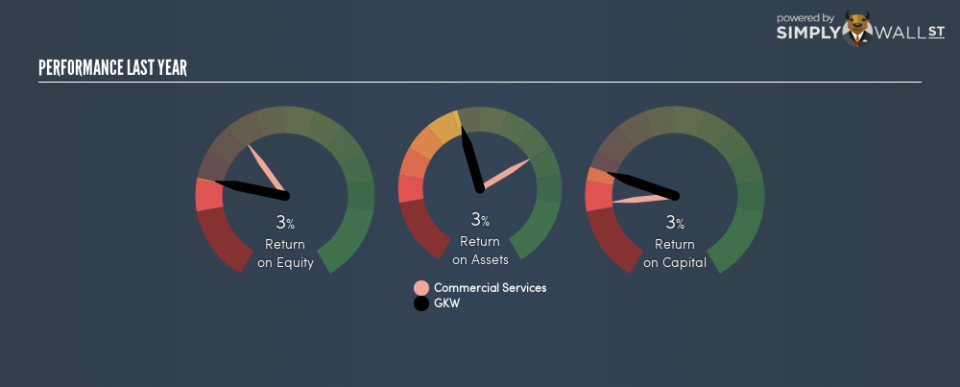Should You Worry About GKW Limited’s (NSE:GKWLIMITED) ROCE?

Want to participate in a short research study? Help shape the future of investing tools and you could win a $250 gift card!
Today we’ll look at GKW Limited (NSE:GKWLIMITED) and reflect on its potential as an investment. Specifically, we’ll consider its Return On Capital Employed (ROCE), since that will give us an insight into how efficiently the business can generate profits from the capital it requires.
First of all, we’ll work out how to calculate ROCE. Second, we’ll look at its ROCE compared to similar companies. And finally, we’ll look at how its current liabilities are impacting its ROCE.
Understanding Return On Capital Employed (ROCE)
ROCE measures the ‘return’ (pre-tax profit) a company generates from capital employed in its business. Generally speaking a higher ROCE is better. In brief, it is a useful tool, but it is not without drawbacks. Renowned investment researcher Michael Mauboussin has suggested that a high ROCE can indicate that ‘one dollar invested in the company generates value of more than one dollar’.
So, How Do We Calculate ROCE?
Analysts use this formula to calculate return on capital employed:
Return on Capital Employed = Earnings Before Interest and Tax (EBIT) ÷ (Total Assets – Current Liabilities)
Or for GKW:
0.035 = ₹82m ÷ (₹4.5b – ₹164m) (Based on the trailing twelve months to December 2018.)
So, GKW has an ROCE of 3.5%.
See our latest analysis for GKW
Is GKW’s ROCE Good?
When making comparisons between similar businesses, investors may find ROCE useful. Using our data, GKW’s ROCE appears to be significantly below the 13% average in the Commercial Services industry. This performance is not ideal, as it suggests the company may not be deploying its capital as effectively as some competitors. Independently of how GKW compares to its industry, its ROCE in absolute terms is low; especially compared to the ~7.6% available in government bonds. It is likely that there are more attractive prospects out there.
In our analysis, GKW’s ROCE appears to be 3.5%, compared to 3 years ago, when its ROCE was 0.5%. This makes us think about whether the company has been reinvesting shrewdly.
It is important to remember that ROCE shows past performance, and is not necessarily predictive. Companies in cyclical industries can be difficult to understand using ROCE, as returns typically look high during boom times, and low during busts. ROCE is only a point-in-time measure. If GKW is cyclical, it could make sense to check out this free graph of past earnings, revenue and cash flow.
How GKW’s Current Liabilities Impact Its ROCE
Short term (or current) liabilities, are things like supplier invoices, overdrafts, or tax bills that need to be paid within 12 months. The ROCE equation subtracts current liabilities from capital employed, so a company with a lot of current liabilities appears to have less capital employed, and a higher ROCE than otherwise. To counteract this, we check if a company has high current liabilities, relative to its total assets.
GKW has total assets of ₹4.5b and current liabilities of ₹164m. Therefore its current liabilities are equivalent to approximately 3.7% of its total assets. GKW has a low level of current liabilities, which have a negligible impact on its already low ROCE.
The Bottom Line On GKW’s ROCE
Still, investors could probably find more attractive prospects with better performance out there. Of course you might be able to find a better stock than GKW. So you may wish to see this free collection of other companies that have grown earnings strongly.
If you like to buy stocks alongside management, then you might just love this free list of companies. (Hint: insiders have been buying them).
To help readers see past the short term volatility of the financial market, we aim to bring you a long-term focused research analysis purely driven by fundamental data. Note that our analysis does not factor in the latest price-sensitive company announcements.
The author is an independent contributor and at the time of publication had no position in the stocks mentioned. For errors that warrant correction please contact the editor at editorial-team@simplywallst.com.

